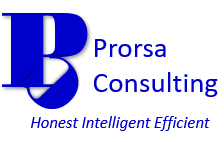Info on the EHS Management System Do Stage You Can’t Ignore
By : Admin -

Disclaimer: Please be aware that this blog post may contain affiliate links and any purchases made through such links will result in a small commission for Prorsa Consulting (at no extra cost for you). Feel free to visit our Disclosure of Material Connection page for more information.
Over the last few weeks, we have covered how to negotiate for environmental, health, and safety (EHS) management systems and how to execute effective planning for system implementation. However, these two concepts alone do not make an EHS Management System.
You can negotiate well and plan endlessly, but an EHS Management System implementation will truly start to take shape once it has moved into the Do Stage. As such, let’s take a brief, but detailed look at the activities encompassed in this stage.
Note: ISO 14001:2015 (Environmental Management) has been utilized as a guide for the listed do stage activities. Nevertheless, the ISO 45001:2018 framework addressing Occupational Health and Safety Management largely aligns with the elements discussed here.
EHS Management System Do Stage: Developing and utilizing procedures and work instructions aimed at addressing identified risks and opportunities
Process Design
The EHS Management System Do Stage outlines how things will get done through operational control and planning. This stage usually takes the most time and effort to complete as it involves the creation of written processes and then putting them into practice.
Ultimately, this activity will provide the organization with a prescribed means to reach its chosen outcomes. The risks, opportunities, and legal & other requirements identified during the Plan Stage should be utilized as a roadmap during the process design phase.
Written processes often come in many forms including:
- Standard operating procedures (SOPs)
- Standard operating guidelines (SOGs)
- Safe work practices (SWPs)
- Work instructions
- Compliance plans

Photo Credit: Question by Geralt on Pixabay.com
Additionally, top management, EHS, and operations must work together in the establishment, implementation, and maintenance of written processes. The cooperative relationship should garner designed processes with controls that work positively for all parties involved.
Operational controls set the safeguards for processes. As such, organizations must develop controls to ensure reliability and eliminate mistakes.
Furthermore, technology use for control improvements must not be overlooked during process design. Lastly, process and control performance should have the ability to be measured.
Worker Involvement
The development of operational controls provides an excellent opportunity to engage the workforce in the management system effort. After all, employees perform the everyday tasks included in the organization’s SOPs, compliance plans, etc.
Workers’ input comprises an integral part of the operational control exercise. They know what works and, more importantly, what doesn’t. So, don’t miss this opportunity to fully engage them for their feedback.
Additionally, organizations must facilitate proper training to affected workers in order to ensure a rewarding system implementation. Workers also must have access to current copies of operational controls for reference when needed.
Information Management
When approaching operational controls, organizations should refer to their frameworks for managing documented information. Ideally, these frameworks would have developed during the Plan stage.
As part of the framework, a set format for written documents proves useful. The format will help make the overall management system cohesive, which assists the users of the documents.
For example, a standardized SOP format may consist of the following sections:
- Purpose – details what the document aims to accomplish
- Scope – outlines the locations, processes, and persons covered under the SOP
- Responsibilities – defines the specific duties of affected persons
- Definitions – provides the meanings of terms used throughout the SOP
- Procedure – gives step-by-step instructions on how to perform a task or function in a safe manner that is protective of the environment
- Additional Requirements – defines other required information, such as training, communication, recordkeeping, and document review requirements
- References – lists records & other documents mentioned in the SOP
Outsourced Processes
The ISO Standards set an expectation that outsourced processes will be examined and controlled during this EHS Management System Do Stage. Aspects such as a contractor’s (or vendor’s) competency, compliance standing, capability, and means to affect the organization’s EHS outcomes must come under consideration.
As with the internal ones, outsourced processes need to possess any controls required to enable the attainment of goals. Also, an evaluation of identified opportunities with regard to outsourced processes should take place to facilitate on-going improvement.

Photo Credit: Image by Daniel Tausis on Unsplash.com
EHS Management System Do Stage: Establishing and implementing a process to handle potential emergencies
Emergencies always occur when we least expect them. These situations often carry a risk to people, the environment, and property. Not to mention the risk to an organization’s reputation and ability to continue to operate. As such, emergency preparedness and control constitute essential parts of any EHS Management System Do Stage.
Planning and designing an emergency control process prior to an occurrence helps to minimize the associated risk. When considering emergency preparedness and control, organizations should address several factors including:
- Identification of types of potential emergencies
- Emergency response approaches
- Incident mitigation, cause analysis, and corrective actions
- Listing of emergency contacts (internal & external)
- Communication (internal & external)
- Emergency response training & testing
A vulnerability assessment can aid organizations in determining the types of potential emergencies that could occur and the related risks. Moreover, a vulnerability evaluation should help guide the organization’s decisions on the types of response approaches and mitigation activities to adequately address the identified vulnerabilities.
The approaches used to manage the organization’s emergencies must be documented, implemented, and maintained in order to meet ISO management system requirements. As with other written materials established during the EHS Management System Do Stage, emergency plans/procedures would be subject to the organization’s information management requirements.
Check out How to satisfy emergency response requirements in ISO 14001:2015 by 14001 Academy for additional reference.
Prorsa Consulting can assist with your environmental, health, & safety compliance, training, data analysis, and management system needs. Check out the Services page for more information. Contact us via contact@prorsaconsulting.com with any questions about our services.
Your feedback on this blog’s content is always encouraged. If you found this information useful, be sure to like and/or share below. You can also give us your feedback via our Contact Us page.
Moreover, you can follow Prorsa Consulting on Google+, LinkedIn, Pinterest, and Twitter.
Want more? Get our Vulnerability Assessment Tool at no cost to you in the Free Resources area. Just subscribe to the Prorsa Consulting Newsletter on the form below to gain access to the Free Resources page for this and other helpful materials for use in your EHS program!


